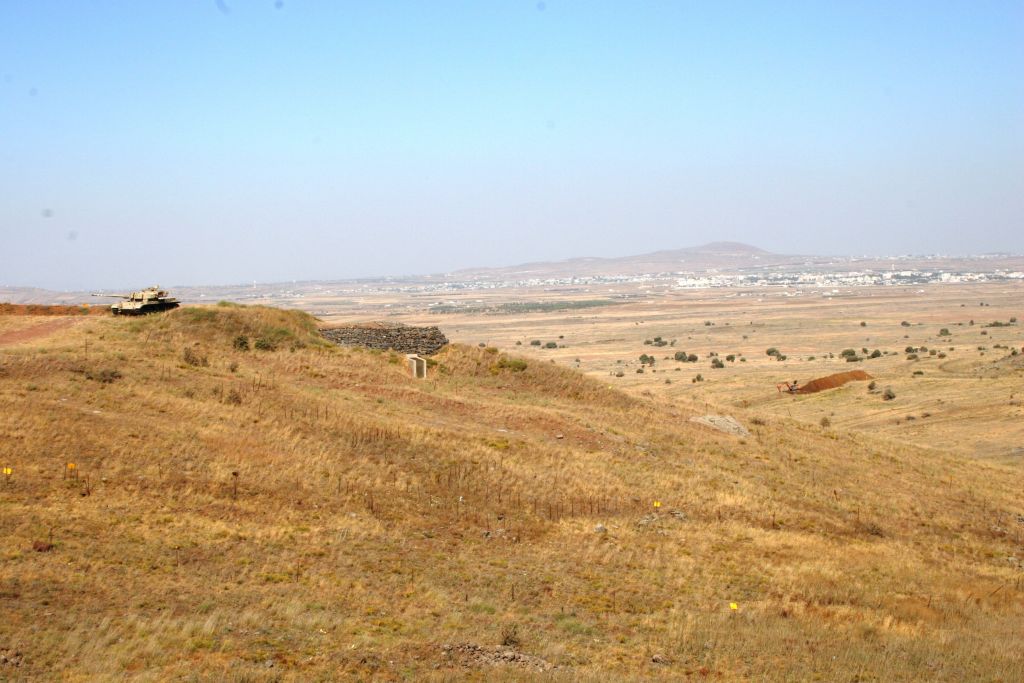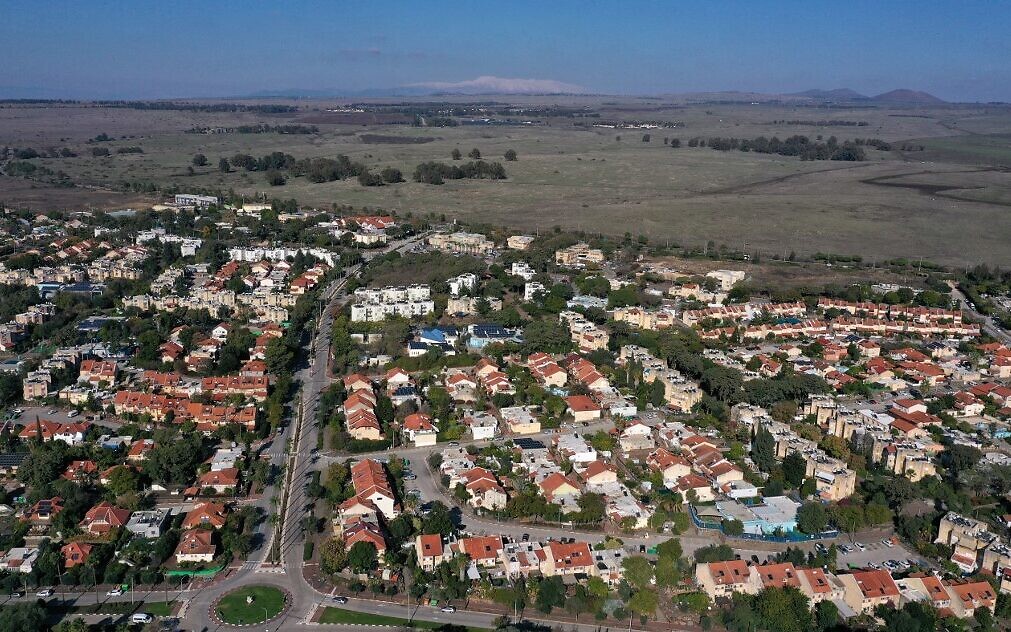The Society for the Protection of Nature in Israel (SPNI) says a cabinet plan to invest NIS 1 billion ($317 million) into doubling the population of the Golan Heights is riddled with “legal, planning, environmental and public [representation]” problems.
During a special cabinet meeting Sunday, held at the Golan’s Kibbutz Mevo Hama, Prime Minister Naftali Bennett announced two new neighborhoods in the town of Katzrin, as well as two new communities to be named Asif and Matar, each with about 2,000 housing units.
But in a detailed response, the SPNI warned that the plan threatens the open vistas, springs, waterfalls and rich biodiversity that make the sparsely-populated region such a draw for Israelis and tourists alike.
The organization said that a plan to set up a special fast-track planning committee for the whole Golan Heights area was legally dubious — planning law only allows such committees for places where there is no settlement at all, it said — and bristled at the fact that no provision had been made to include a single representative of the public, let alone of environmental organizations.

Ministers take part in a special cabinet meeting on the Golan Heights, on December 26, 2021. (Kobi Gideon/GPO)
The SPNI suggested that, instead, an official responsible for the development of the Golan would be added to the Northern District planning committee, noting that district councils know their areas well and better understand what must be preserved in the region.
The idea of creating two new communities from scratch — in an area that the regional council has zoned for protection — does not makes sense from a planning, social, environmental or economic perspective, the SPNI went on, given the burning need to strengthen the many existing moshavim and kibbutzim, and in particular the region’s main town and service center, Katzrin.
Rather than reinventing the wheel, it said, the state should use some of the 12,000 existing permits for residential construction that have not been implemented. An additional 4,500 permits exist to build in Katzrin alone.
The document went on to criticize a plan for a massive solar energy field in an area known as the Valley of Tears, the site of a crucial battle during the 1973 Yom Kippur War, in which a small group of Israelis held back a Syrian advance, sustaining great losses.

The Valley of Tears (Emek Habaha), viewed from the Oz77 memorial area. (Shmuel Bar-Am)
The valley, said the SPNI, is an important area of open space that is home to 19 species of mammals, among them gazelles and wolves.
Instead, it recommended a regional electricity saving drive and the erection of solar panels on the roofs of existing homes, along with renewable energy storage, to allow communities to provide their own power.
For scenic reasons, and to protect birds, it also called for high-voltage electricity lines to be buried underground.
As regards the government’s plan for new industrial areas to create employment, the SPNI said that the country is peppered with such areas, many of which are not used. It said the state should work within the framework of the Northern District planning authority’s policy of strengthening existing industrial zones — there is one in Katzrin, which can be expanded — by providing incentives to draw factories to the country’s rural areas and ensuring that revenue from the taxes that they pay is distributed fairly.

This aerial view shows Katzrin, an Israeli town in the Golan Heights, on December 26, 2021. (Menahem Kahana/AFP)
Finally, the report noted that dozens of tons of basalt rock have been piled up over the years (in the course of clearing fields and preparing land for military activity) and that these should be used before any thought is given to establishing new stone quarries that will only further deplete open space.
The government says that its plan is aimed at “sustainable demographic growth” on the Heights.
For that to be true, the SPNI insisted, meaningful commitments will need to be made to balance the needs of development with those of nature. This means creating more nature reserves, rehabilitating sites that have been disturbed (for example, by the army), creating a reservoir in the Hula Valley for farm irrigation so that Golan spring water can flow into streams rather than be diverted, and pledging to protect endangered species, such as vultures and gazelles.

An Egyptian vulture in flight over the Gamla nature reserve on the Israeli Golan, May 2013. (Wikipedia/Вых Пыхманн/CC BY-SA)
Some 53,000 people currently live in the Golan Heights: 27,000 Jews, 24,000 Druze, and some 2,000 Alawites (an ethnoreligious group originating from Shia Islam and a minority sect to which Syria’s ruling family, the Assads, belong).
Apart from the United States, the international community regards the Golan as part of Syria, which lost the territory to Israel in the 1967 Six Day War. Israel annexed the Golan in 1981.
The government plan, condemned by Syria and Arab Joint List MK Ahmad Tibi, aims to upgrade infrastructure, establish new communities and neighborhoods, and create 2,000 new jobs by turning the region into a center for Israel’s renewable energy technologies.
Some NIS 576 million ($183 million) is to be allocated for housing planning — about 3,300 new housing units in Katzrin and another 4,000 in the Golan Regional Council — within five years.
Another NIS 160 million ($51 million) is to be invested in infrastructure and transportation, to improve the quality of life in the Golan Heights.
Prime Minister Naftali Bennett first announced the plan in October.
Fast-tracked plan to double Golan population a minefield — nature advocacy group - The Times of Israel
Read More
No comments:
Post a Comment